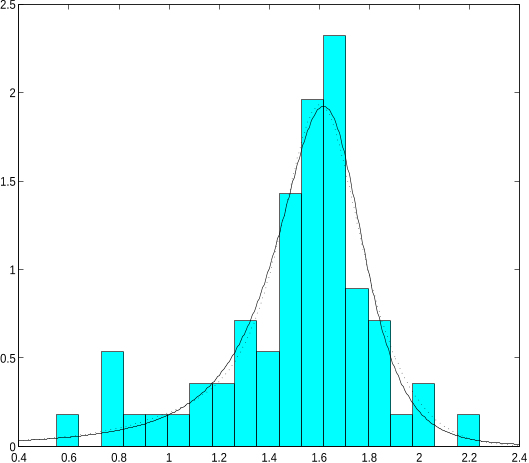













6 citations
5 citations
5 citations
...Moreover, as elaborated in the articles by Arnold et al. [7], Ma and Genton [8] as well as in the book edited by Genton [9], the application of weighted distributions extends to the areas of econometric, astronomy, engineering, medicine as well as psychology in scenarios where the observed random phenomena can be described by equation (1), i.e., a probability density function distorted by some multiplicative non-negative weight function....
[...]
...[7], Ma and Genton [8] as well as in the book edited by Genton [9], the application of weighted distributions extends to the areas of econometric, astronomy, engineering, medicine as well as psychology in scenarios where the observed random phenomena can be described by equation (1), i....
[...]
5 citations
5 citations
2,470 citations
...This representation has been used by Azzalini & Capitanio (2003) to define certain distributions by perturbation of symmetry....
[...]
...For K = 1, the pdf is always unimodal as was already noted by Azzalini (1985) for the univariate skew-normal distribution....
[...]
...The case K = 1 corresponds to Azzalini & Dalla Valle's (1996) bivariate skew-normal distribution, which cannot capture the bimodality....
[...]
...For K ¼ 1, the pdf is always unimodal as was already noted by Azzalini (1985) for the univariate skew-normal distribution....
[...]
...In particular, for ,il = ,B2 = /33 = & = 0, the pdf is exactly the bivariate skew-normal proposed by Azzalini & Dalla Valle (1996), and known to be unimodal (see Fig....
[...]
1,719 citations
1,478 citations
1,215 citations
...Finally, note that the stochastic representation of FSSdistributions follows from the stochastic representation of SS distributions described byWang et al. (2004), see also Azzalini & Capitanio (2003)....
[...]
...Similarly, multivariate distributions such as skew-t (Branco & Dey, 2001; Azzalini & Capitanio, 2003; Jones & Faddy, 2003; Sahu et al., 2003), skew-Cauchy (Arnold & Beaver, 2000) and other skewelliptical ones (Azzalini & Capitanio, 1999; Branco & Dey, 2001; Sahu et al., 2003) can be represented by…...
[...]
...Jones & Faddy (2003) and Azzalini & Capitanio (2003) fit two forms of skew-t distributions to these data....
[...]
...If each term has an odd order (all ks are odd), then the polynomial is called an odd polynomial, whereas if each term has an even order (all ks are even), it is called an even polynomial....
[...]